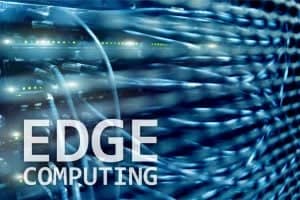
The changes edge computing brings can be profound, and businesses will want to be in the best possible position to change as well.
The rise of edge computing means new ways of connecting, computing, and doing business. Companies are moving away from rigid, centralized computing models and toward a more adaptable and flexible distributed model. They are reaching out to partners and customers in new ways, as well as enriching the experiences between employees within their own walls. As they migrate into this promising new world, however, decision-makers need to ask some fundamental questions to make sure their efforts will be kept on track and fruitful.
1) What’s the business case for edge? This question may seem obvious, but all too often, technology rollouts take place to enhance speed, security, or processing capability without visible benefits to business users. Edge computing, because it can be disruptive, needs to be guided by the business. As with all major technology initiatives, the investment should be based on how it will help the business, as well as alleviate pain points. The business case needs to be laid out clearly, with the appropriate technology to follow: does the company seek to ramp up its service capabilities, such as employing sensors for preventive and predictive maintenance? Does it seek a real-time view to sense and respond to fast-changing market conditions? Does it mean improving the quality of life for customers?
2) Are people ready for edge computing? Moving aggressively into edge scenarios, from IoT to remote systems, will require greater collaboration and communication between employees. For example, the operations technology and information technology teams will need to work closely to shape the delivery of data from production equipment to analytics applications. In addition, corporate teams may need to interact with stakeholders outside the enterprise, especially if they oversee systems and sensors that deliver data. With enhanced capability – such as the ability to detect maintenance issues before they happen at remote or customer sites – there will need to be response teams ready to deploy. In addition, staff trained and accustomed to managing centralized data centers will need a greater understanding of network issues, as well as managing the tsunami of data likely to surge through the enterprises as edge computing expands.

3) Is the infrastructure ready for edge? Another variation of this question is how much of a role cloud providers should provide to edge management and processing. Cloud providers have the capacity and infinitely scalable resources to support a growing network of edge devices. However, issues such as security and latency in moving data between cloud sites and devices need to be weighed in the decision. Some data may need to be processed and stored locally within devices – either for security reasons or because real-time interaction is required, such as a sensor correcting tolerances within a machine, or due to government mandates. Moving functions to a central cloud may be called for if there is a need for greater processing capacity, follow-up analysis, or interaction between other devices.
4) Are enterprises ready for the security challenges of edge computing? Security may be the Achilles Heel of edge computing, as many devices are likely to have minimal security residing within them. While there is increasing attention among device manufacturers to potential security flaws, the onus is on the enterprise to assess the risk of sending or generating data at edge locations. The same security best practices in place for traditional centralized architectures – including password protection, encryption, firewalls, monitoring, and audits – need to be extended as much as possible to include this growing network.
5) How will maintenance and upgrades of remote devices and systems be handled? Since many edge devices and systems are scattered at remote locations across the globe – or maintained by outside parties – ongoing maintenance and upgrades may be challenging. Ultimately, the ideal will be to enable software-driven upgrades delivered automatically across all these devices, but the reality these days is a company may be connecting to thousands of devices from different manufacturers and built on different protocols. The quality and lifespan of edge devices may help mitigate these requirements, but organizations need to be ready with ways to ensure that the devices they depend on for data insights are running at 100 percent.
Moving to the edge is a journey that means greater agility and opportunity for enterprises. However, the changes edge computing brings can be profound, and businesses will want to be in the best possible position to change as well.







